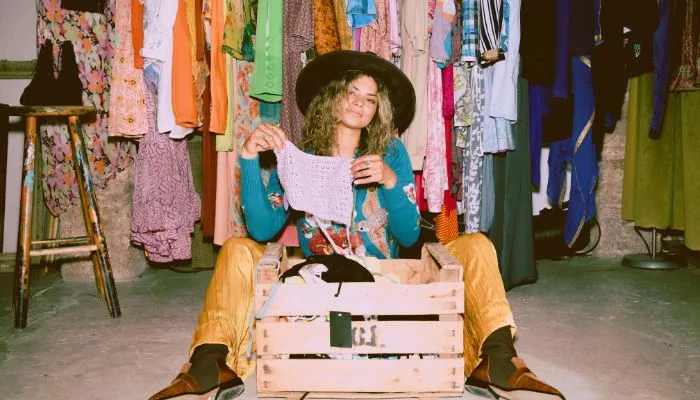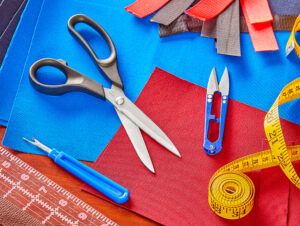Vintage clothing has a timeless appeal that is rare in a world that values fast fashion and outdated trends. Vintage clothing not only tells stories from the past but also allows people to express their style strikingly. We will look at old clothing ideas from different eras to find fashion gems that still amaze and inspire us today. This guide will help you put together an outfit that’s a mix of old and new with no problem, no matter how long you’ve been into vintage clothing or how new you are to it.
1. Roaring Twenties:
Ruffled skirts, low-waisted silhouettes, and Art Deco details changed the way people dressed during the Roaring Twenties. Cloche hats, fringes, and beaded baubles take you back to the Jazz Age. Choose pastel colors or striking black and white for an old-fashioned atmosphere. You’ll feel like you’re in The Great Gatsby when you wear a knee-length dress with fringes, a T-strap, and a long pearl necklace.
2. The Great Fifties:
The 1950s were the heyday of feminine beauty and charm. Wear the long skirts, corsets, and petticoats that made this era famous. If you combine it with a fitted blouse and a polka dot or tea-length skirt, you can look like Audrey Hepburn or Marilyn Monroe. For classic 1950s glamour, don’t forget to complete the look with tiny heels, a wide-brimmed hat, and a bold red lip.
3. Swinging Sixties:
There was a social revolution in the 1960s, and fashion showed how people felt about that change. Wear with an A-line mini skirt, dress, and thigh-high boots for a trendy look. Bright geometric prints and solid colors help you channel the Twiggy or Brigitte Bardot style. To get the trendy vibe of this era, you can add statement sunglasses, statement jewelry, and a sleek, voluminous hairstyle.
4. Bohemian Seventies:
In the 1970s, a variant of the bohemian style emerged, characterized by the fact that the style was no longer limited to one style, but to mixed textures and patterns. Trends such as maxi skirts, wide trousers, and jackets with fringes became classics. Paisley prints, leather, and wide-brimmed hats create a relaxed, natural atmosphere. For a true ’70s look, add crochet accessories and platform shoes. Try combining bright colors with floral patterns for a real hippie-bohemian look.
5. Electric Eighties:
The 80s had a lot of luxury and bright colors. Wear power suits, shoulder pads, and bright colors to show what this exciting decade was like. For an elegant yet powerful look, pair a structured blazer with high-waisted wide-leg trousers. For a more casual look, wear a loose sweater, jeans, and a belt. If you want to look electric and retro, don’t forget to follow the 80s hair and makeup style. Use bright eye shadow and big lips.
6. Grunge Nineties:
In the 1990s, Grunge fashion led the trend with rebellious and diverse styles. Wear a flannel shirt, combat boots, and distressed jeans to look like you belong to that era. For a casual grunge look, wear an oversized sweater or cardigan over a top or sundress. Add dark pastels, chokers, and hats to complete the look. To get a real ’90s grunge look, follow the “DIY” philosophy and ruin your jeans or swap your band’s T-shirt.
Conclusion
Wearing vintage clothing is a fun way to learn about fashion’s past. By using ideas from different eras, you can create an outfit that not only showcases your style but also pays tribute to well-known trends from the past. Whether you prefer the glitz of the Roaring Twenties, the sophistication of the 1950s, or the rebellious spirit of the 90s, vintage fashion allows you to create your time travel outfits. So go back in time and let the classic beauty of old clothes transform your current look.
FAQs
1. What is used clothing?
Vintage clothing is clothing that is at least 20 years old and shows how people wore it in a certain era. Many believe that these pieces will never go out of fashion and will have a special historical and aesthetic value.
2. Where can I buy used clothing?
You can find vintage clothing in many places, such as flea markets, thrift stores, and online antique stores. You can also find secret gems in the attic of your home or during an online garage sale.
3. How do you care for old clothes?
Due to their age, vintage clothing should be handled with care. Check the care label every time and follow the cleaning instructions. Hand washing or dry cleaning is usually recommended. Store clothing in a cool, dry place, away from direct sunlight, to prevent fading and falling apart.
4. How do I know if the clothes I buy are authentic?
When trying to determine if something is vintage, you need to look at the labels, stitching, zippers, and overall construction. Understanding fashion trends and brand history from a specific period can also help prove legitimacy. Talking to an antiques expert or enthusiast can provide you with useful information.
5. Can old clothing be exchanged for a better fit?
Alterations can be made, but these must be done carefully to maintain the original appearance of the garment. Simple changes, such as hemming or hemming, can be made, but major changes can reduce the original value.
6. Which periods of vintage clothing are popular?
For example, Fabulous Fifties (long skirts and petticoats), Roaring Twenties (flapboard dresses), Bohemian Seventies (hippie style), Electric Eighties (bright colors), and Grunge Nineties (casual and rebellious) are all popular retro styles. Second rate.


